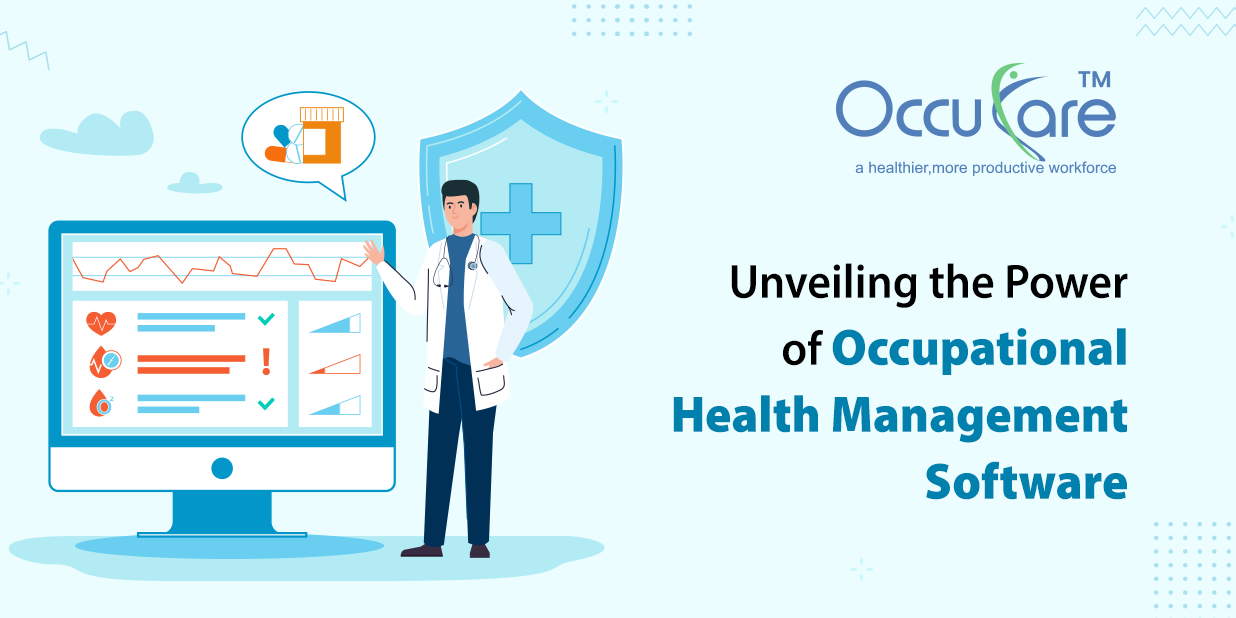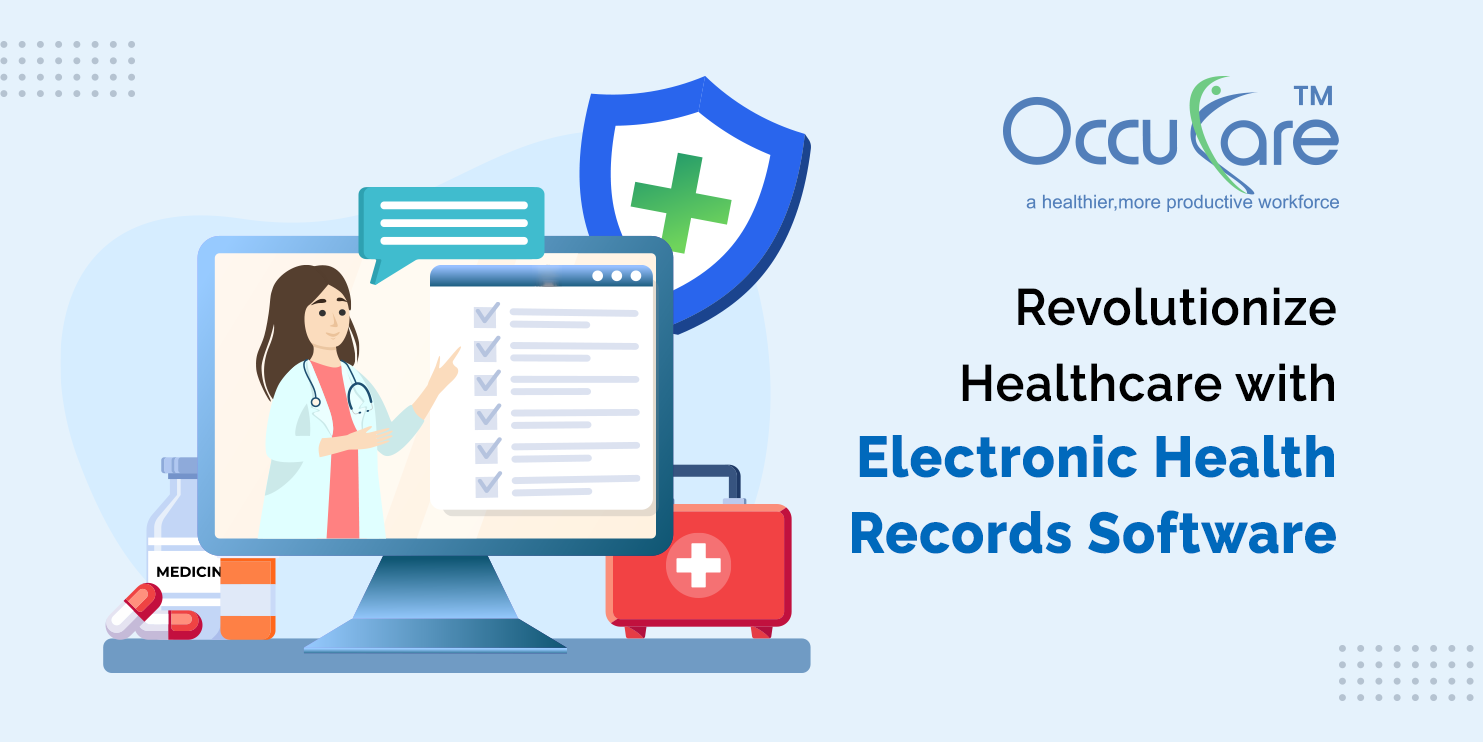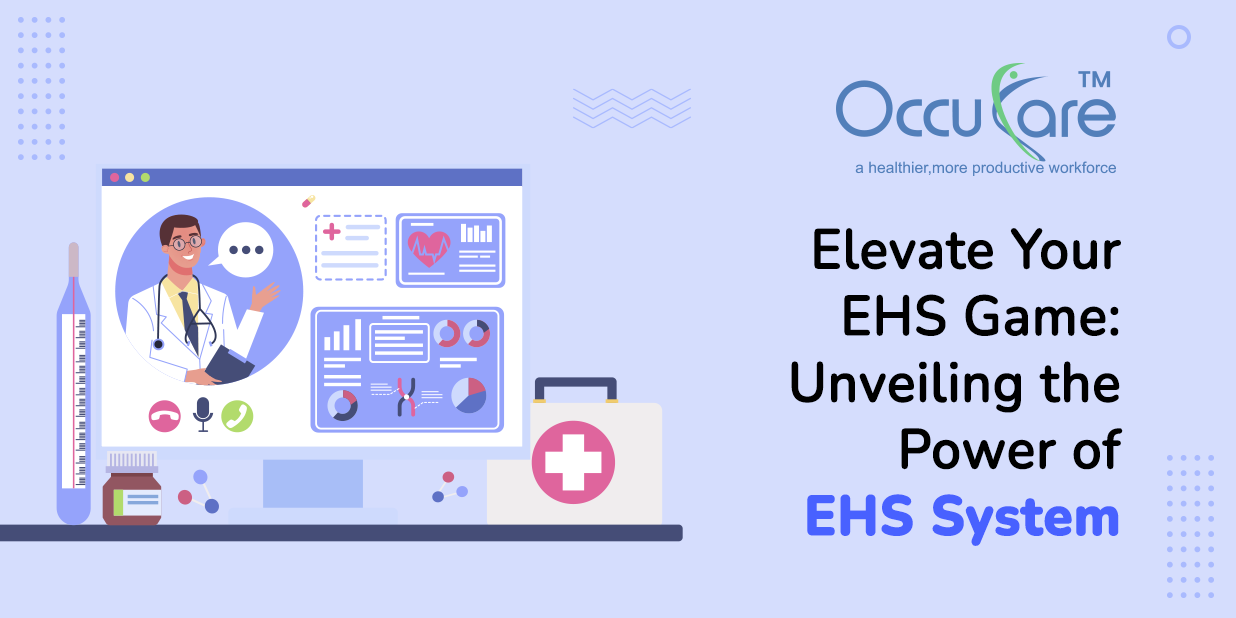It is more essential than ever to promote employee health and safety in today’s fast-paced workplace. Occupational health management software is growing more and more popular amongst businesses looking to improve workplace wellness programs. This blog examines how utilizing occupational health software might transform your company’s strategy regarding worker health and safety, confirming adherence and cultivating a positive work environment.
1. Understanding the Need for Occupational Health Software
The workplace wellness landscape is evolving quickly as more businesses see the value of all-encompassing health policies. Occupational health software implementation is necessary for efficient management of employee well-being.
Role of Occupational Safety Software:
An essential tool for detecting workplace dangers and guaranteeing adherence to health laws is occupational safety software. By incorporating this software into your daily operations, you may improve overall safety culture and drastically lower worker injuries.
Key Features of Occupational Health Software:
Knowing the essential characteristics of occupational health software is essential while selecting it. Typically, effective software consists of:
- Health Tracking and Monitoring: Monitor employee health metrics and track potential risks.
- Incident Reporting: Streamline the reporting process for workplace incidents and injuries.
- Compliance Management: Ensure adherence to relevant regulations and standards.
Employers can provide a safer and healthier work environment for their staff by implementing an effective health software.
2. Streamlining Compliance with Occupational Health and Safety Software
For many firms, maintaining compliance with health rules presents a substantial problem. Occupational Health and Safety Management Software, on the other hand, can greatly streamline this procedure.
Automated Compliance Tracking:
Organizations can quickly meet all regulatory standards by automating compliance tracking using Health Software. This automation minimizes the chance of non-compliance while lessening the administrative strain on the safety and HR staff.
Real-Time Reporting and Analytics:
The capacity of health management software to produce real-time reports and analytics is one of its biggest benefits. With the help of this tool, businesses can keep an eye on compliance levels and pinpoint possible areas for development, which will eventually improve worker safety.
3. Enhancing Workplace Safety Culture with Occupational Safety Software
For any firm hoping to promote a safe and healthy work environment, a robust safety culture is essential. Businesses can encourage proactive safety measures among employees by putting Safety Management Software into practice.
Centralized Incident Management:
Occupational Health and Safety Software facilitates the centralization of incident management procedures within businesses. Through the real-time documentation of incidents, organizations can examine patterns, pinpoint underlying reasons, and execute efficient remedial measures.
Empowering Employees through Training:
Essential safety training can be given to employees by firms through the integration of training management functions in an effective occupational health management system. Providing education to staff members encourages a culture of compliance and safety.
4. Leveraging Data Analytics in Occupational Health Management Software
Using analytics in your health software is crucial for improving workplace wellness programs in the era of data-driven decision-making.
Data-Driven Insights for better Decision-Making:
Organizations can gather and examine health-related data with the use of advanced software. Through the extraction of practical insights from this data, companies can make well-informed decisions that enhance the general well-being of their workforce.
Predictive Analytics for Risk Mitigation:
Your safety management software can assist firms in identifying possible health problems before they become more serious by utilizing predictive analytics. Businesses can proactively develop strategies to avoid hazards and promote a healthier workplace by reviewing historical data.
5. Integrating Occupational Health Software with Existing Systems
Integrating your health management software with current business systems and procedures is crucial to maximizing its efficacy.
Integration with HR and Payroll Systems:
Processes can be streamlined and uniform updates to employee health data across platforms can be guaranteed by integrating your Occupational Health and Safety Software with payroll and HR systems. Improved data accuracy and collaboration are fostered by this connection.
Enhancing Communication Across Departments:
Improved departmental collaboration and communication are facilitated by a single occupational health software. Organizations may guarantee everyone agrees with health and safety goals by dismantling organizational silos, which will ultimately lead to better results.
6. Selecting the Right Occupational Health Management System:
Achieving your company objectives depends on selecting the appropriate software. These are important things to think about while choosing the ideal software for your requirements.
Assessing Organizational Needs:
Consider the unique requirements of your company before choosing any occupational health software. Determine which features are essential for managing occupational health and safety, and make sure the software supports your strategic goals.
Usability and User Experience:
Your occupational safety system’s usability is crucial. An interface that is easy to use promotes staff involvement and makes adoption easier. Make sure the health software you select is user-friendly and intuitive.
Scalability For Future Growth:
Your company’s needs for occupational health will expand along with it. Select Occupational Health System that is scalable so that it may change to meet your changing needs. As your company grows, you may add more features and functionalities with a customizable management system.
7.Implementing Your Occupational Health: Best Practices
Implementing health management system successfully necessitates meticulous preparation and implementation. To guarantee a seamless installation process, consider the following best practices.
Engage Stakeholders Early:
Include important parties in the Health Software implementation process from the beginning. Involving staff members, supervisors, and pertinent divisions will promote a feeling of responsibility and guarantee that the system satisfies organizational requirements.
Providing Comprehensive Training:
The effective implementation of your health management software depends on training. Make certain that every user receives in-depth instruction on the features and advantages of the program.
Continuously Monitor and Improve:
After your occupational safety software is installed, keep an eye on its functionality and ask users for input. Evaluate the system’s efficacy on a regular basis and make the required changes to maximize its capabilities.
8. The Future of Occupational Health Management: Innovations and Trends
The field of occupational health is changing as technology develops. Keeping up with new developments can help companies get the most out of their health and safety programs.
Cloud-Based Solutions:
The way that businesses handle health data is being revolutionized by the move to cloud-based occupational health software. Cloud solutions facilitate better team collaboration by providing increased accessibility, scalability, and real-time updates.
Mobile Accessibility:
The modern workplace is dynamic, thus being mobile-friendly is essential. Employees can record events, access training materials, and monitor compliance while on the road with the use of mobile applications that are frequently included in modern occupational health management software.
Machine Learning and Artificial Intelligence:
The potential to improve data analysis capabilities of Occupational Safety Software is due to the combination of AI and machine learning. By recognizing trends, anticipating dangers, and recommending preventative actions, these technologies can enhance your workplace wellness programs.
9. Measuring the Impact of Occupational Health Management Software
Measuring the impact of your occupational health software on workplace well-being is crucial to determining its efficacy.
Key Performance Indicators (KPIs):
Setting up key performance indicators (KPIs) is essential to evaluating your OHS Software’s effectiveness. Incident rates, staff health measures, and training completion rates are examples of common KPIs. Organizations are better able to pinpoint areas for improvement when these indicators are routinely monitored.
Employee Feedback and Engagement:
It is essential to get employee input regarding the Occupational Health Management System and its effects on workplace well-being. Including staff members in the assessment procedure promotes ongoing development and a sense of ownership.
Conclusion:
Purchasing high-quality occupational health and safety management software is a calculated step that will improve worker safety and health in your company. Effective Occupational Health Software can help you create a strong safety culture, expedite procedures, and make data-driven decisions.
Now is the perfect opportunity to transform workplace wellness. You can ensure regulatory compliance and create a healthier, more engaged staff by utilizing the power of integrated OccuCare software. Take advantage of this shift right now to make the most of your occupational health programs!





